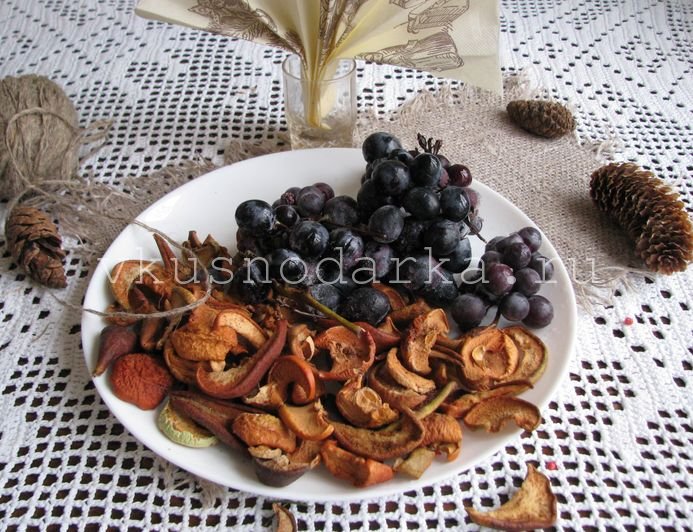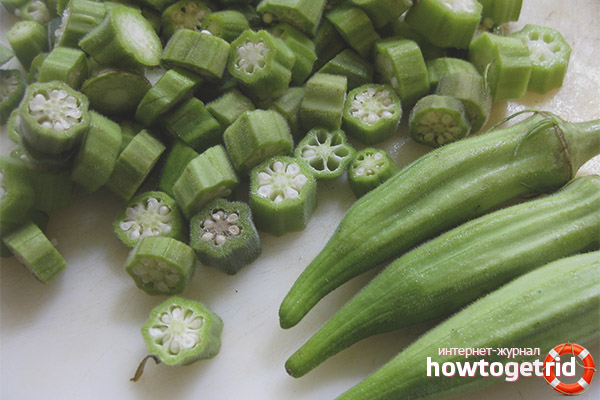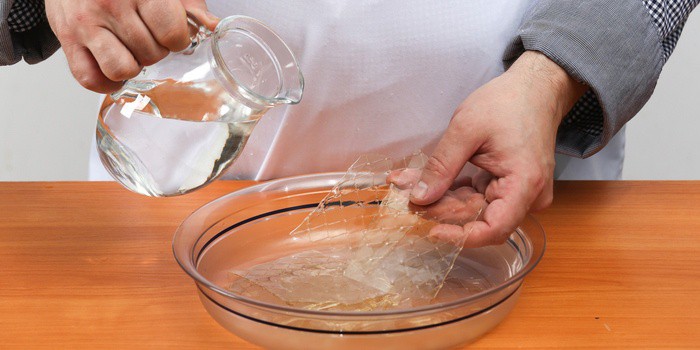What is the difference between sushi and rolls. What are rolls?
In Russia, sushi and rolls were learned in the mid-1990s. At that time, Japanese cuisine was considered exotic and expensive. And the profession of a cook making sushi was rare and very popular.
General concept of sushi
Japan is an island country, so seafood and seaweed are more common in the Japanese diet. If you combine all this with rice, you will get sushi, which are considered low-calorie foods and are very healthy.
In Japanese cuisine, only sea fish is used, so eating it raw is not dangerous. Today, an increasing number of Russians prefer to decorate their tables with sushi and rolls. There are many restaurants where Japanese dishes are popular. And there are no problems with products that are used in the preparation of rolls and sushi - they can be bought at specialized retail outlets or in the market. 
Sushi, or in the eastern way of sushi, is a traditional Japanese appetizer, the mandatory components of which are rice and seafood. Rice should have good adhesion and be cooked in a special way (it is better to use traditional Japanese rice cooker). Regular rice will not give sushi the desired shape and will not fix the filling.
Cooked rice is soaked in special dressing Mitsukan, which consists of Japanese rice vinegar, salt and sugar. To give rice a special mild flavor, a leaf of dried kombu kale is added to mitsukan. Rice for cooking sushi should be cooled to body temperature.
Rolls - a kind of sushi
Rolls are one of the options for sushi and are so named for their shape. These are rolls twisted in nori seaweed. There are some differences between such popular dishes.
To prepare the rolls, you need special equipment - a bamboo mat and a knife. Sushi can be cooked by hand, without the use of tools. 
Sushi is made of rice according to the principle of modeling. Something like an egg is formed from a lump of rice weighing 20 g, and a slice of fish or seafood, greased with wasabi, is laid on top. Sushi can be with tuna, shrimp, sea bass, eel, salmon, salmon.
There is another kind of sushi. A ball of rice is placed in a wide strip of nori and folded in the form of a cup. Caviar (classic red or tobiko) is used as a filling and is decorated with a thin slice of cucumber.

There are specific sushi wrapped in a thin strip of nori seaweed and sprinkled with sesame seeds.
To prepare classic rolls, half a leaf of a noriya is used, on which rice and filling are evenly laid out. Rolling up rolls requires some skill. The finished roll is cut with a sharp, moistened with water, a knife into 6 identical pieces. Rolls are more circular than rectangular, and they are cut into 8 pieces. This is done for ease of presentation and due to the fact that odd numbers are not accepted in Japan. All rolls are laid out in such a way that they can be easily taken with two hands, without violating their structure.
Differences between sushi and rolls
The significant difference between sushi and rolls is in used products as a filling. The composition of the sushi includes only rice and seafood. The filling for the rolls can be very different, the more applicable to the conditions of Russian cuisine and the Russian mentality.
Some rolls are considered traditional Japanese cuisine, but in fact the Japanese have never eaten this. For example, spicy rolls mixed with mayonnaise sauce. It is important for the Japanese to preserve the natural taste of the products, and it is rarely supplemented with something new.
- traditional roll with cucumber or salmon. As a filling, thin peel of a cucumber, uncut straws, or fish is used.

The rolls that are offered to the population of Russia may include 5-6 ingredients. The most popular Philadelphia roll contains cream cheese, which is completely unacceptable for the Japanese.
Classical philadelphia roll contains cucumber, avocado and king crab filling. They fold so that the nori leaf is inside the rice. Then the roll is rolled in the flying fish roe (tobiko). It is unusual in appearance and has a specific taste.

For the preparation of vegetable rolls, tomatoes, sweet peppers, avocados, cucumbers, carrots, lettuce are used. More often they are "rice out."
Rolls can be with fruit or berry filling.
Sushi differs from rolls in consistency and saturation - they are lighter and airier. Rice used in them is not so sticky and can even “crumble” when consumed. But sushi is dipped in soy sauce with fish down so that the sauce does not fall on rice.
Ginger is served with sushi to bring down the aftertaste before consuming the next bite. Wassabi (Japanese horseradish) and soy sauce are usually served with rolls.
Sushi is served only in cold and raw form, which preserves the useful vitamins and minerals in them. Rolls can be heat treated and hot.
To prepare sushi and rolls go different parts of the fish. Mostly fish fillet is used in rolls, while a thin bony part may be suitable for wrapping sushi. All fish are cut at an angle of 45 degrees.
Rolls suggest a manifestation of more imagination than sushi. Fans of oriental cuisine can make their choice: visit sushi bars and restaurants, place orders for a home or office, or learn for yourself.
Japanese cuisine is quite diverse, but sushi and rolls are most common. What is the difference between sushi and rolls, you can understand, knowing the technology of cooking. These two seemingly similar snacks are completely different.
How sushi and rolls differ from each other
Sushi, or sushi, is a Japanese dish with a rich history. By tradition, it is made from rice cakes and slices of fresh fish. Over time, the recipe underwent changes and rolls appeared - a new, no less tasty dish.
How sushi differs from rolls is not always clear at first sight
The main differences between the two dishes are as follows:
- in appearance;
- stuffing;
- method of use.
Sushi is a slice of fresh fish on a pressed cake, it can be pulled by a ribbon of nori seaweed. Served with wasabi sauce. Rolls are twisted by a roll, inside of which there is a filling. Algae are either on top or inside. The filling for the rolls is not only fish, but also cheese, fruits, vegetables or meat. Several components can be combined at once. Sushi is a one-component dish, always with seafood. In addition, they eat it only with chopsticks. But you can eat rolls with your hands.
They also prepare dishes in different ways. For rolls, a bamboo mat is used so that the finished snack does not fall apart, keeps its shape. While sushi is made only with the help of hands, they form a dense cake, evenly distribute the filling, so that the sushi retains its appearance.
There are several options for performing rolls: nori-maki, uro-maki, yaki-maki
Sushi and rolls became popular in our country just a few years ago. Up to this point, these dishes were difficult to find in Russia; they were served only in specialized restaurants. In just a few years, the trend has changed, now sushi and rolls have become very popular.
Many lovers of Asian cuisine confuse sushi and rolls. Only a few know the differences between them. On the one hand, both dishes have common roots; they are similar in composition and appearance. On the other hand, sushi and rolls are different dishes, with their own cooking features.
Their main difference is that sushi always consists of rice and seafood. Sauces and seasonings are allowed. Rolls have a richer composition.
The most popular types of rolls in Russia:
| Title | Composition | Interesting Facts |
| California poppies. | Nori, rice, crab, avocado, cucumbers, caviar and special mayonnaise. | Popular in Moscow restaurants. |
| New York Poppies. | Nori, rice, salmon, apple, two kinds of caviar. | It has the most refined taste according to experts. |
| Kyoto. | Nori seaweed, rice, cheese, salmon, caviar. | Kyoto is popular in Europe, it is most often ordered in restaurants in England and Germany. |
| Kapamahi. | Nori, rice, fried sesame seeds, cucumber. | It is the least popular in Russia according to a survey of fans of Japanese cuisine. |
| Philadelphia. | Nori, rice, salmon, cheese, avocado. | Also very popular both in Russia and in other countries. |
Differences of Japanese sushi from Russian

The Japanese are very picky about every stage of cooking their national dishes. This guarantees high quality food. Many Japanese, having tasted sushi and rolls in Russia, spoke very badly of them, claiming that this was not sushi at all, and certainly not rolls.
This can be explained by the difference in cooking technique.
Important! The Japanese use only fresh fish to cook these dishes. They call fresh fish caught no more than five hours ago. If the deadline expires, the Japanese give the fish to the poor. After five hours, it is strictly forbidden to cook it. This is the main difference between Japanese sushi and rolls from Russian.
Varieties of sushi

The names of dishes of oriental cuisine are difficult for perception, they cannot be remembered the first time. Fans of this kitchen often confuse their names, and are surprised when they bring to them quite the wrong dish, which they thought at the time of ordering.
Here are some popular types of sushi:
- nigiri;
- futomaki;
- orad
This three tops the list of the most popular Japanese dishes in our country. They are recommended to order for beginners. If Japanese cuisine is new to you, you should start exploring it with these dishes.
Raw Fish Safety

Many compatriots fundamentally do not use Oriental dishes because of the risk of running into a low-quality product. They often use raw fish. Refusing a dish at all is an extreme, but caution will not hurt.
When buying raw fish for making sushi and rolls at home, make sure that:
- the whole fish, the insides are in place;
- the meat is elastic, when pressed there is no dent;
- eyes are not cloudy;
- the fish has no damage to the body;
- there is a smell of fresh fish.
A good way to protect raw fish from eating is to use hot condiments and additives. The most popular of these is wasabi. It is served along with some types of sushi, rolls and sashimi.
The healing properties of wasabi:
- supports the cardiovascular system;
- prevents the formation of cancer cells;
- improves the gastrointestinal tract;
- boosts immunity;
- is a powerful antiseptic;
- cleanses the body;
- lowers blood cholesterol.
Benefits for the body

Sushi and rolls have a composition rich in vitamins and minerals. These dishes are very useful if they are prepared in accordance with sanitary standards.
Valuable components:
- vitamin C;
- omega-3 fatty acids;
- potassium;
- magnesium;
- phosphorus;
- calcium;
- b vitamins
Beneficial features:
- help lose weight;
- improve digestion;
- normalize bowel function;
- improve the functioning of the heart and blood vessels;
- saturate the body with iodine.
Harm and contraindications

Like any product, sushi and rolls have a number of contraindications. They can not be eaten by pregnant and lactating women. It is not recommended to give these products to children under seven years of age. However, if the product does not contain raw fish, it will not harm the child.
Since sushi and rolls are served with spicy spices, it is contraindicated for people suffering from gastritis, an ulcer. Saltwater fish may contain mercury. It is hazardous to health.
Spicy additives and spices can also trigger an allergic reaction. Therefore, for the first time it is worth being limited to one piece. If there is no reaction, the next time you can afford more.
Important! The main danger of eating raw fish dishes is the possibility of salmonellosis infection. The danger is that doctors cannot immediately make this diagnosis. Adults are successfully treated for this disease. For the child's body, salmonellosis is dangerous.
Use sushi and rolls correctly: carefully study the contraindications, get acquainted with the possible consequences, order them only in proven places with a good reputation. These simple rules will protect your health. Enjoy your meal!
Useful video
- Related posts
Japanese cuisine has firmly taken its place in our preferences, and most modern connoisseurs of sushi prefer rolls to all other types - this is a form of serving Japanese dishes and one of the varieties of sushi. Externally, the rolls are a roll made of rice, nori leaf algae, and a wide variety of fillings. Traditionally, such a roll is cut into an even number of pieces - 6, 8 or 12.
Types of Rolls
On the site of the sushi delivery service site, the site presents about three dozen types of rolls, different in composition and taste characteristics. But in total there are more than 200 recipes for making rolls in the world, and the largest assortment falls not on Japan, as it might seem logical, but on European countries that carefully adapt the rolls to their preferences.
There are 4 most popular types of rolls:
- traditional classic rolls that are fully consistent with the traditions of Japanese cuisine. They are often called maki rolls and are such dishes a thin rice roll, tightly wrapped in a nori leaf and containing only 1 filling ingredient (tuna, salmon, eel, etc.);
- baked rolls are already a find of modern cooks: rice rolls and fillings are subjected to additional heat treatment at high temperature. This type of rolls is a tribute to the fashion of those places where raw fish is not considered as edible;
- tempura rolls are also a modern interpretation of Japanese traditions: this type differs from baked rolls by the method of heat treatment, which takes place not in the oven, and the roll is fried in a special breading in boiling oil, which gives it a crisp;
- branded rolls Philadelphia. California, Alaska and Unagi - these rolls are present on the menu of almost every sushi bar, like Caesar salad on the menu of almost every restaurant. This variety of rolls has nothing to do with the traditions of Japanese cuisine, except perhaps for the ingredients that are used to prepare them. These rolls contain sauce inside the roll, several types of filling at once, can have a “turned” structure.
Today, you can endlessly try the most diverse formulations of this intercontinental land type - there are so many of them. Well, for those who do not like experiments, Bono Yapono masters prepared the most delicious and most popular types, so ordering rolls in Podolsk is a wonderful opportunity to organize a tasty and healthy meal.
Roll History
Although the rolls belong to Japanese cuisine, in fact they were popularized in America, where in 1973 the chef of Tokyo Kaikan restaurant (Los Angeles) invented the most widespread and demanded California roll. As mentioned above, the Japanese eat rolls only in one strict and concise form, but they appeared for the first time not in the form of rolls, but rather like paperweights: at the dawn of time, Japanese fishermen put their catch in barrels after cleaning and gutting and poured rice, ramming tightly. Rice perfectly absorbs excess moisture and forms an environment where bacterial growth slows down. When the catch season stopped, the fishermen took the fish out of the tubs and discarded the rice. But at some point, they noticed that rice and fish form a dense puff dish, which was later added spices and sauce ... So the story of rolls began.
Japanese cuisine is one of the healthiest in the world. The first place in popularity is occupied by sushi and rolls. However, many do not know how they differ and confuse these dishes, believing that they are almost the same. However, this is not at all true. There is a difference in the ingredients and in the cooking process. Let us dwell on the differences.
Ingredients
To begin with, both sushi and rolls are necessarily made from rice. Moreover, rice is not suitable at all, but only special - it should have more gluten, otherwise our sushi and rolls will not keep their shape. Mandatory ingredient for the manufacture of rolls are plates of nori - dried pressed seaweed or rice paper. It is in them that rolls with rice, seafood and vegetables are wrapped. But for many types of sushi this component is not needed. Sushi and rolls are prepared with seafood - the difference is that sometimes fresh or pickled vegetables are also used in rolls.
Cooking process
Next, we pay attention to what is the difference between sushi and rolls from the point of view of the manufacture of these dishes. Sushi is usually molded by hand, the fish is cut into slices - thin, flat slices. Rolls are rolls, rolling them is not too easy if there is no certain dexterity, therefore a special mat is used. Raising its edge, we get the opportunity to accurately roll the roll without sprinkling its contents. Vegetables and fish in the stuffing rolls are cut into strips.
Appearance
If you still have not understood what the difference between sushi and rolls is, just consider the dish carefully. Sushi is a small, tightly molded, oblong ball of rice on which lies a slice of fresh or pickled fish.

Rolls come in two types: regular and inverted. In ordinary rolls, the filling is inside: fish or seafood (shrimp, squid, octopus, shellfish), vegetables. They are as if wrapped in a layer of rice, and rice, in turn, is wrapped in a dark green nori sheet or white rice paper. In the “inverted” rolls inside, the filling wrapped in nori is all wrapped in a layer of rice, and on top of the roll is sprinkled with caviar or seeds, for example, caraway seeds or sesame seeds.

Feed way
Here the differences are minimal. Both sushi and rolls are served with the same additives: soy sauce, wasabi, pickled ginger and vegetables, rice vinegar. However, sushi can only be cold, while rolls can be served hot.
Sushi and rolls with tuna
One set of ingredients, however, can be prepared with sushi and rolls. One of the options helps to understand the difference between sushi and rolls.
Ingredients:
- - 1 glass;
- green onion feathers - 5-6 pcs.;
- fresh tuna without skin and seeds (fillet) - 130-150 g;
- rice vinegar - 1 tbsp. spoon;
- nori - 2 large sheets + 1 small sheet;
- - 2 tbsp. spoons;
- balsamic vinegar on herbs - 1 tbsp. spoon;
- sesame oil - 1 tbsp. spoon.
Cooking
To begin with, we will fish: half a slice of fillet is slanted obliquely with thin plates - always across the fibers, the second half is cut into small thin strips or cubes. Put in a bowl, pour oil, balsamic vinegar and soy sauce, add finely chopped onions and leave to marinate for about half an hour, periodically mix to marinate our tuna evenly. Cook rice according to the instructions, season with vinegar and let it cool.

On the mat we put a large sheet of nori (previously you can lower it for a minute in water, but this is not necessary). We spread a layer of rice on it, distributing it so that the edges of the sheet are free. In the rice - approximately in the middle - we put the pieces of tuna and roll the roll, densely tamping the filling with the help of a mat. We repeat the procedure, cut our rolls into 6-8 parts each.
From the remaining rice we make small balls, flatten them from the sides, cover with fish slices. Next, by cutting a small sheet of nori into strips, we wrap them in our finished sushi.



















